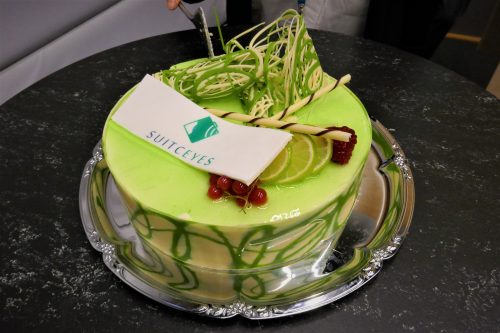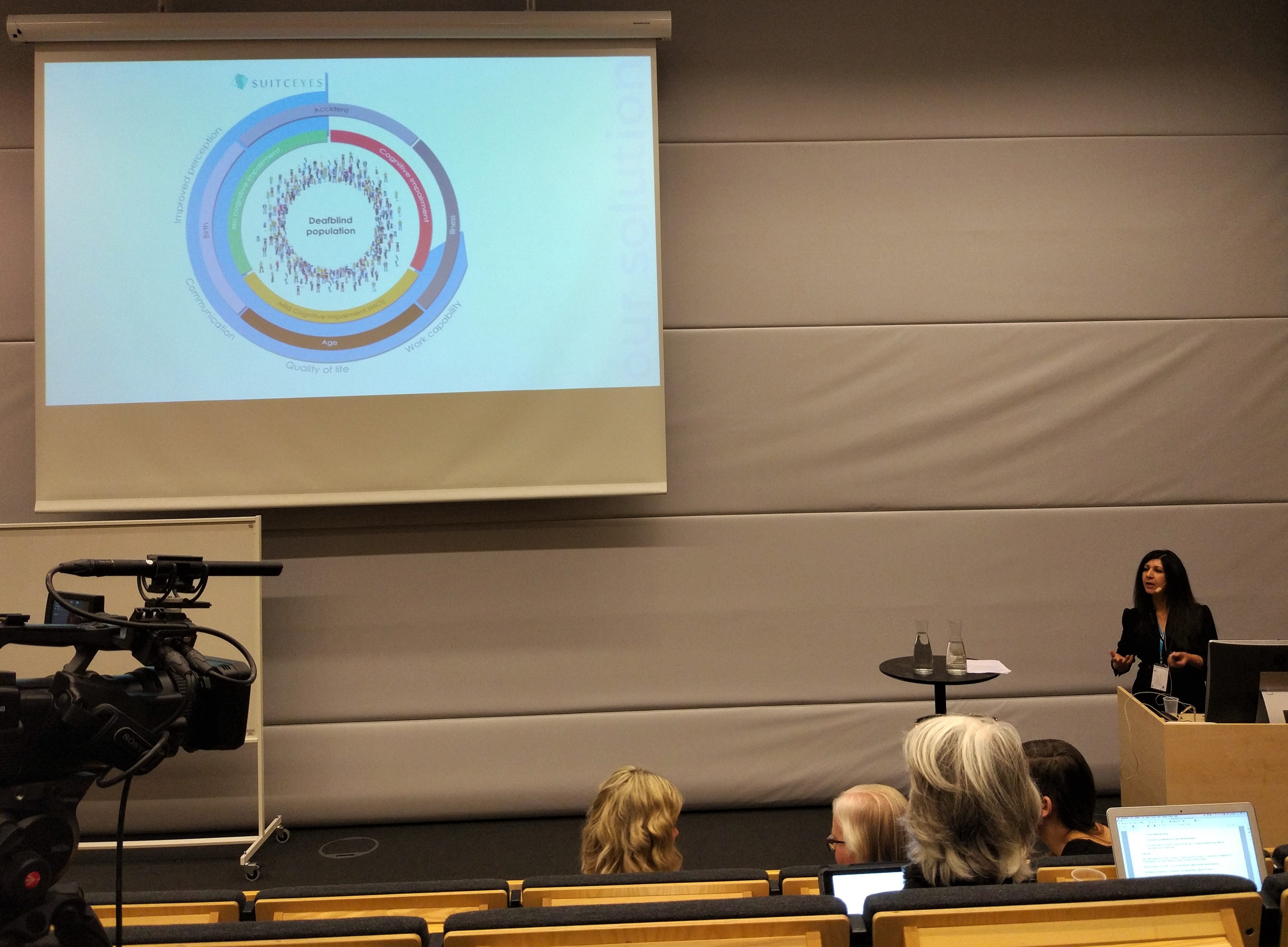Improving communicative experiences of persons with deafblindness.
Date: January 17, 2018.
Time: 8:00 – 12:30.
Venue: Textile Fashion Centre, Vestindien C, Skaraborgsvägen 3, Borås, Sweden.
The great beginning of our EU-funded project SUITCEYES was the Symposium: From Touch to Cognition on January 17, 2018. Jenny Johannisson, the Deputy Vice Chancellor for Research at the university of Borås started the Symposium with a warm welcome and congratulated the consortium for the funding approval.
Nasrine Olson, the project coordinator continued the Symposium by giving an overview over the project schedule, its goals and the formation of the project idea. She encouraged all partners and the advisors of the project to cooperate and work hard, to make the best possible solution a reachable outcome.
After this motivating introductions two institutions introduced themselves in a 20min presentation. Thomas Ragnarsson, a representative of the National Agency for Special Needs Education and Schools (Swedish: SPSM) and Henrik Hildemar from Mo Gård.
The task of SPSM, or the National Agency for Special Needs Education, is to ensure that adequate conditions for fulfilling educational goals are provided for children, young people and adults – regardless of functional ability. This is done through accessible teaching material and government funding and the support that SPSM offers to special needs schools, their student-health services, and special need pedagogues.
The focus of Mo Gård lies on the support in communication and disabilities. One guiding principle of Mo Gård is: Communication or support in communication is an important part of creating the right conditions for a good life. The individuals they support are always the starting point of the work of Mo Gård.
The special guest of this Symposium was Linda Eriksson, a person with deafblindness who was contacted via the National Resource Center for Deafblindness (NKCDB). With an overwhelming opennness she talked about the concerns and difficulties of a person with deafblindness and broadened the mind of her audience. Especially the partners of the project took the opportunity to get a deeper understanding of the needs and wishes of the group of users the project will aim on.

Lissa Holloway-Attaway a representative of the university of Skövde gave a broad introduction into games, on their role in society and how this role becomes more and more important over time. In the presentation “Games for Change”, Lissa Holloway-Attaway talked about the opportunity to give games not only a fun character, but also to include them into education and learning of social aspects and interactions.
From SAAB – Defence and Security, Otto Carlander presented some of his own field studies on tactile interfaces. It was tested if soldiers, pilots or people in a combat vehicle are able to react more quickly on vibration signals than on visual signals. The outcome of the studies was a time dependent change of preference for vibration and visual signals. In the beginning vibrating signals tend to make faster reactions possible, whereas a detailed view and visual support gets more important later.
As the final talk Astrid Kappers from Vrije Universiteit Amsterdam and Nils-Krister Persson from university of Borås introduced the general topic of haptics and textiles. Astrid Kappers is researcher in the field of haptics and conducts psychophysical user studies on haptics since already a few years. Nils-Krister Persson is an associate Professor at the university of Borås and the Swedish School of Textiles with the focus on Textile Technology.
This wide variety of different talks makes a great start to the project SUITCEYES and represents very well the diverse problems and aspects of such a complex and important user group, as persons with deafblindness are.
If you are interested, please see the programme of the Symposium:
SUITCEYES Symposium – From Touch to Cognition

